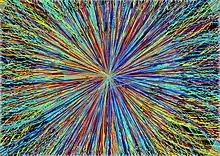As each bunch of heavy ions consist of a large number of nuclei it does not seem unlikely that multiple binary ion collisions will occur as it does in p-p collisions. However, should this be the case, I do not see how a possible azimuthal anisotropy could be related to the elliptic flow - which to my understanding is defined for the individual binary nuclei collisions and in terms of the reaction plane of the collision.
So, either the luminosity is tuned to allow for maximally one collision per crossing or there is a way to separate the individual collisions from each other.
So, my question is two-fold:
How many pairs of nuclei collide in heavy ion collisions (at the LHC)?
If $n>1$; how are they distinguished from each other?
